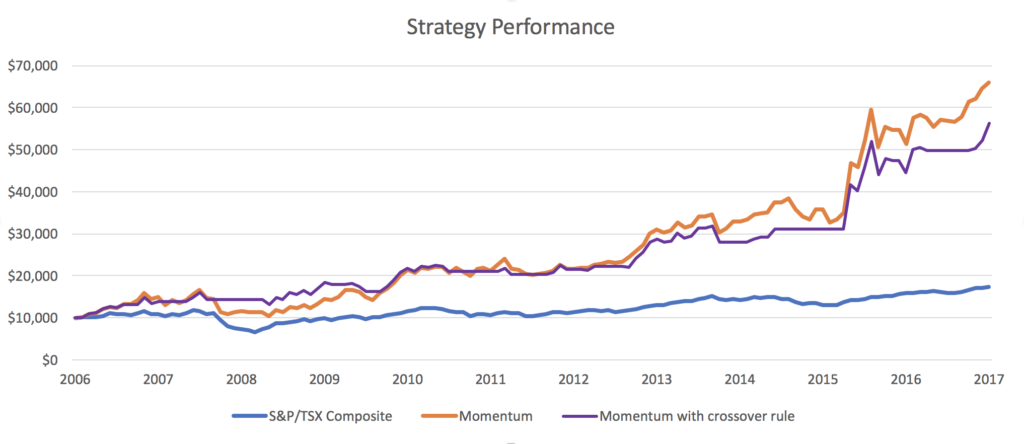Get the benefit from investing momentum, with less risk
Use moving averages to mitigate downdrafts
Advertisement
Use moving averages to mitigate downdrafts


| Annualized Return | Downside Deviation | Maximum Drawdown | |
| Momentum Strategy | 18.7% | 13.6% | -36.7% |
| Momentum Strategy + Crossover Rule | 17.0% | 9.5% | -18.6% |
Share this article Share on Facebook Share on Twitter Share on Linkedin Share on Reddit Share on Email